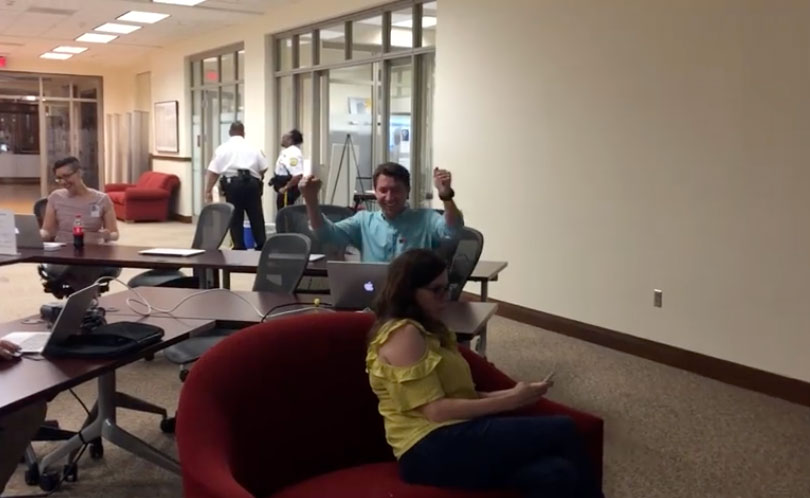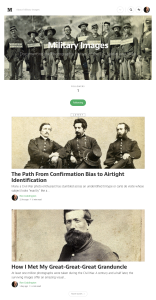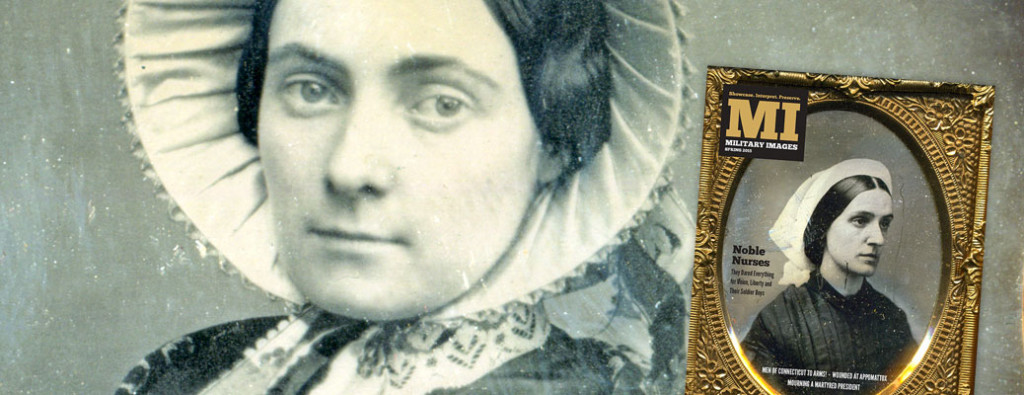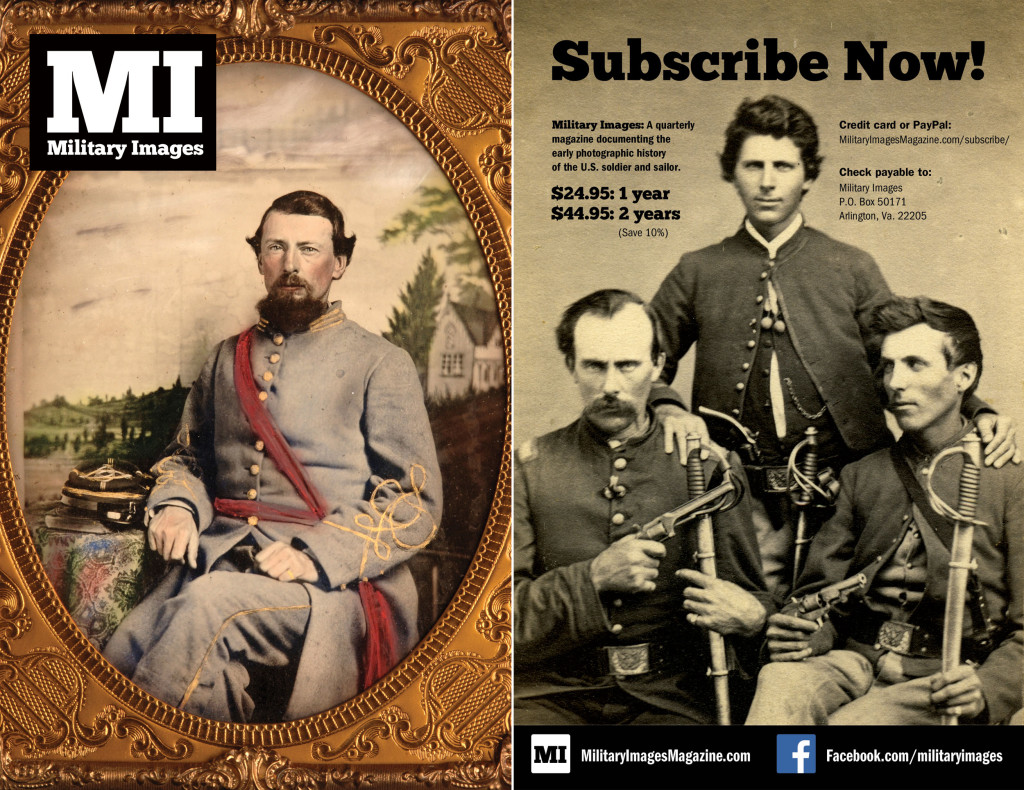A complete table of contents for the Autumn 2024 issue of Military Images magazine, and information about how to purchase single issues and subscriptions.
Vol. XLIII, No. 4
(80 pages)
Print edition: Visit our store to check availability
Digital edition: Visit JSTOR.org to purchase
Subscribe or renew your subscription
Explore the MI Archives:
Browse | Advanced search | Tutorial
Inside
Cover
A sixth-plate tintype from the Claudia and Al Niemiec Collection pictures two soldiers from the U.S. Colored Troops (USCT) at Benton Barracks in St. Louis.
Table of Contents (p. 1)
Editor’s Desk (p. 2)
After a quarter century of subscription costs remaining the same, the rate for a single year will change from $24.95 to $30 effective Jan. 1, 2025.
Mail Call (pp. 3-4)
Feedback includes an observation about uniform coats buttoned on the opposite side, praise for columnist Phil Spaugy, praise for theory about the iconic image of three Confederate prisoners after Gettysburg, and more.
Military Anthropologist (p. 4)
A breakdown of about 2.1 million soldiers contributed by each state and territory to the U.S. Army during the Civil War as a percent of the 1860 U.S. Census population figures.
Passing in Review (p. 6)
Book review of The Atlanta Campaign, 1864,(Casemate Publishers) by David A. Powell.
Photo Sleuth by Kurt Luther (pp. 8-11)
Exploring the search for Civil War soldier photos from the Battles of First and Second Manassas, uncovering portraits and expanding collections for museums.
Antebellum Warriors (p. 12)
This unidentified soldier wears the antebellum uniform of the 6th Massachusetts Infantry, which gained national attention in 1861 during the Baltimore riot.
Most Hallowed Ground (p. 14)
General John A. Rawlins, Ulysses S. Grant’s chief-of-staff, died in 1869. Grant missed being at his deathbed by an hour. Rawlins rests in Arlington Cemetery.
The Honored Few (p. 16)
Jenny Langbein, a drummer boy in Hawkins’ Zouaves during the Civil War, bravely saved his comrade at the Battle of Camden, earning a Medal of Honor and becoming a New York lawyer.
The Citizenry by Elizabeth A. Topping (pp. 18-19)
Calisthenics, introduced in the 1830s, revolutionized fitness for women with light exercises and gymnastic routines, promoting health, grace, and preparing women for motherhood.
Of Arms and Men by Phil Spaugy (pp. 22-25)
The First Model Maynard Carbines carried by the Bolivar Troop of Mississippi during the early part of the Civil War proved formidable, almost mythical, weapons.
The Black Phalanx at Benton Barracks: Transforming men of color into U.S. soldiers, late 1863 to early 1864 by Ronald S. Coddington (pp. 28-31)
African American soldiers of the United States Colored Troops (USCT) at Benton Barracks in St. Louis endured prejudice and hardship before becoming distinguished U.S. Army men.
JEB: A portrait taken in Hagerstown captures Stuart during the withdrawal following Gettysburg by Phil McCoy (pp. 32–40)
During the retreat after the Battle of Gettysburg, JEB Stuart posed for this portrait in the Hagerstown, Maryland, gallery of photographer Elias M. Recher.
Back to Libby: In 1864, Capt. Matt Boyd successfully made the Great Escape from Libby Prison. In 1889, he returned to deal with his demons. by Ronald S. Coddington (pp. 42-52)
Boyd, a captain in the 73rd Indiana Infantry surrendered at the abrupt end of Streight’s Raid, returned to Libby Prison as a guard when the building was moved to Chicago and opened as a museum.
Forever Peace: A former Confederate gives a miniature of the Appomattox surrender table to Ulysses S. Grant by Ronald S. Coddington (pp. 54-58)
Ulysses S. Grant received a hero’s welcome in Philadelphia in 1879, featuring a grand parade and the presentation of a gold miniature table symbolizing peace after the Civil War.
Artisans of Ames: An antebellum portrait of the people behind the prominent Civil War arms manufacturer by Ron Maness(pp. 60-63)
Ames Manufacturing Company artisans, known for producing military arms, gathered circa 1850 in Chicopee, Mass., posing with cannons, swords, and silverware near their factory.
Material Culture by Bill Thompson (pp. 66-67)
Robert S. Capen of the 1st and 4th Massachusetts cavalries carried this Colt Model 1860 revolver during the Civil War, and a photograph of his wife and son.
Women of War by Melissa A. Winn (pp. 68-70)
Dr. Mary Edwards Walker, the only woman to receive the Medal of Honor, was a pioneering Civil War surgeon, women’s rights advocate, and a champion of dress reform.
Behind the Backdrop by Adam Ochs Fleischer (pp. 72-73)
The Moore brothers’ Hartford, Conn., studio produced high-quality Civil War portraits with a unique military backdrop, blending photography and fine art.
Vignette: Episodes of the Civil War by Scott Valentine (p. 74)
William Estes Hacker of the 3rd Maryland Infantry, wounded at Antietam in 1862, never fully recovered. He died of typhoid fever in 1863 and is buried in Philadelphia’s Laurel Hill Cemetery.
Stragglers (pp. 76-77)
Union soldier images contributed by Military Images magazine subscribers include men from the 43rd Wisconsin and 12th Connecticut infantries, and others.
The Last Shot (p. 80)
Two political cartoons depict Lincoln’s decisive 1864 election victory over McClellan, highlighting the Union’s support during the Civil War.









































